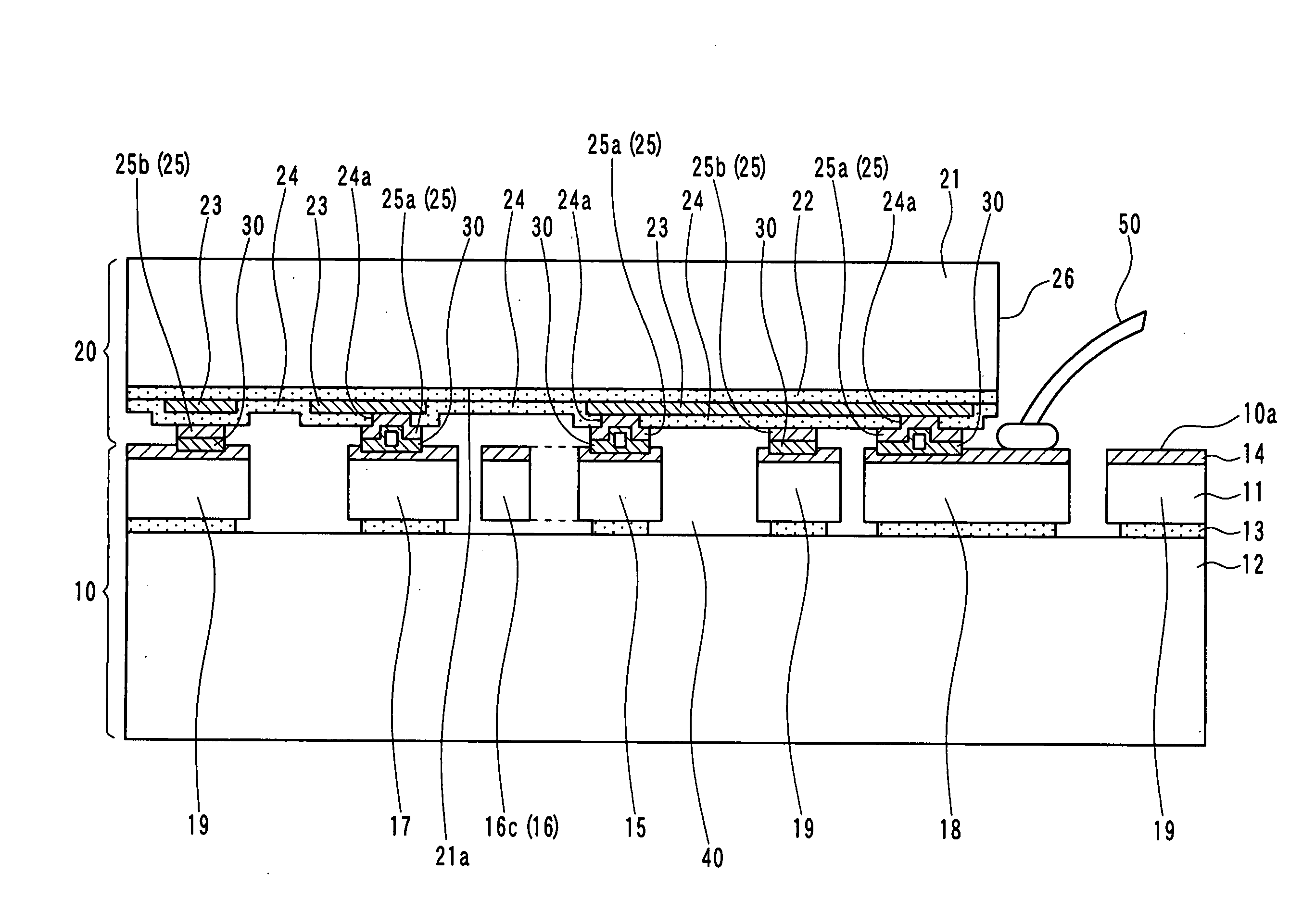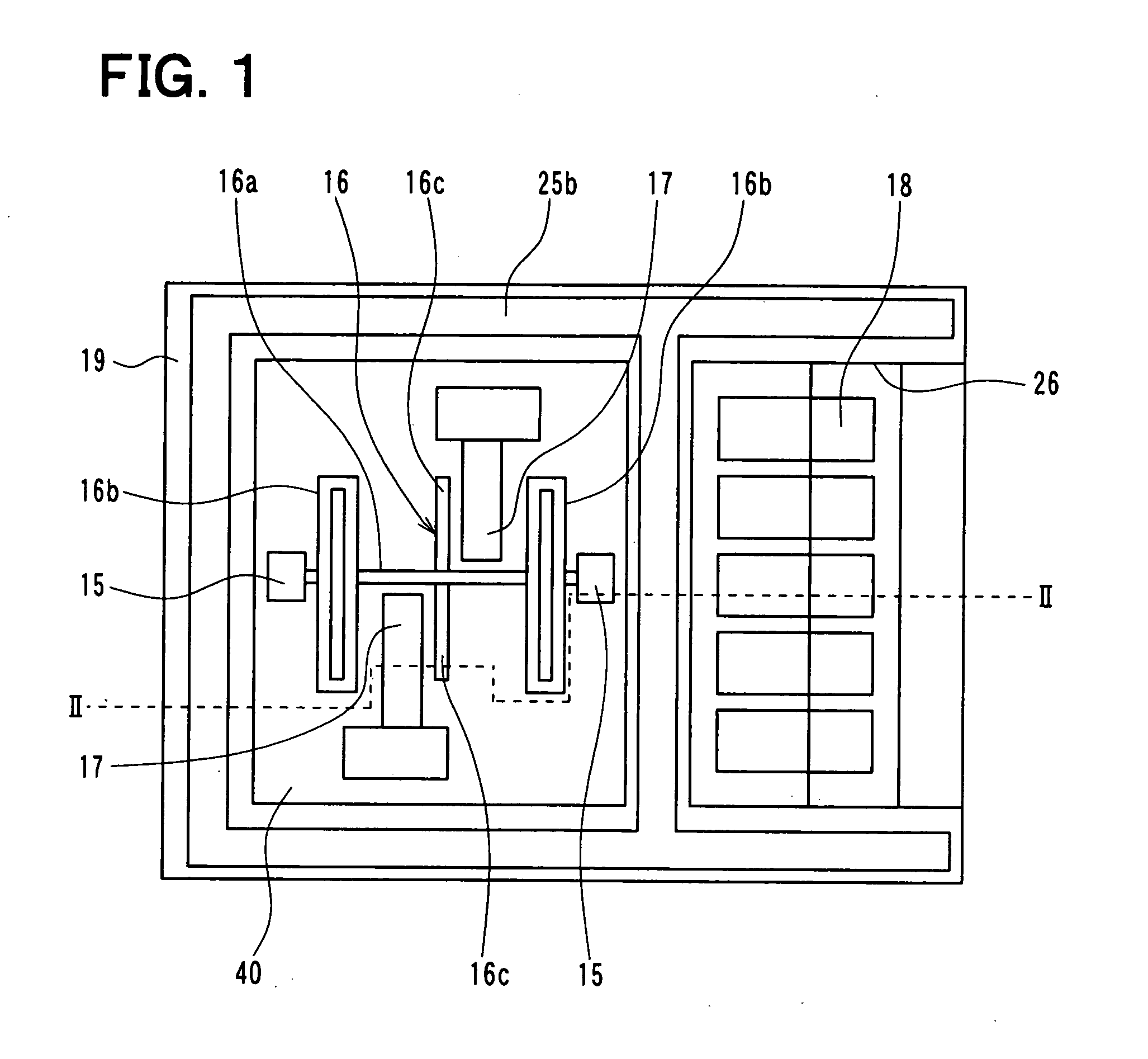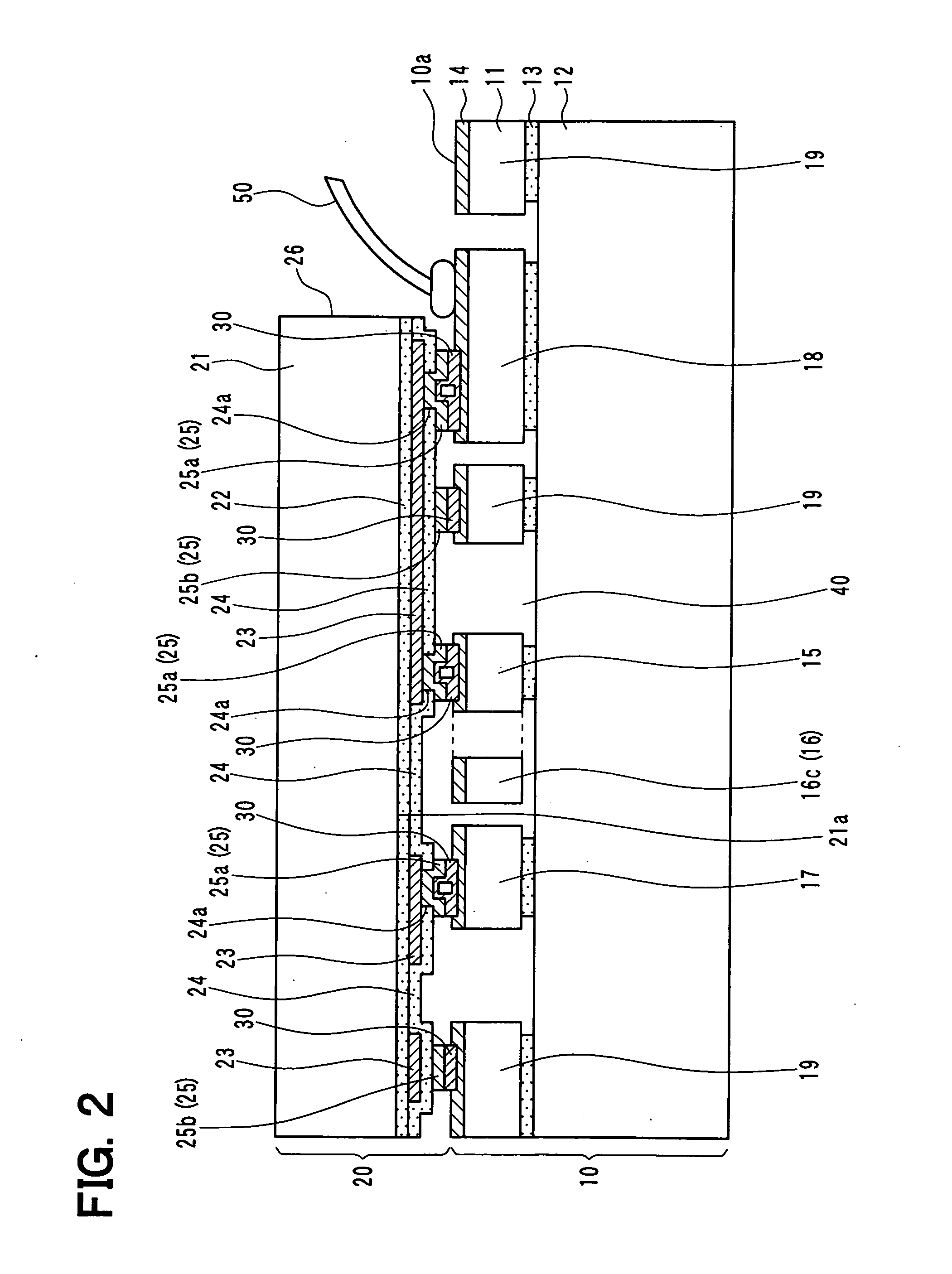Semiconductor device and method for manufacturing the same
a semiconductor and semiconductor technology, applied in the direction of microstructural devices, microstructured devices, instruments, etc., can solve the problems of reducing the manufacturing yield of the sensor, complicated manufacturing process, damage to the connection and conduction of the device, etc., and achieve the effect of improving the bonding strength between the first chip and the second chip and improving the productivity of the semiconductor devi
- Summary
- Abstract
- Description
- Claims
- Application Information
AI Technical Summary
Benefits of technology
Problems solved by technology
Method used
Image
Examples
second embodiment
[0128]In the first embodiment, the wiring layer 14 in the sensor portion 10 covers the concavities on the wiring portion 25a, and then, the eutectic alloy between the wiring layer 14 and the wiring portion 25a is formed. In the second embodiment, the wiring layer 14 is bonded to the flat surface of the wiring portion 25a.
[0129]FIG. 8 shows a bonding state of the sensor portion 10 and the cap portion 20. FIG. 8 corresponds to FIG. 6.
[0130]In FIG. 8, a part of the wiring portion 25a of the second wiring layer 25, which is embedded in the opening 24a of the second insulation film 24, is concaved because of a step coverage effect, so that the surface of the wiring portion 25a has a concavity. This concavity has a bottom, and is formed in such a manner that the surface of the wiring portion 25a of the second wiring layer 25 is concaved toward the first wiring layer 23.
[0131]Since the conductive layer 60 is formed on the surface of the wiring portion 25a, the conductive layer 60 has a su...
third embodiment
[0137]In the first and second embodiments, the concavity of wiring portion 25a is formed on the opening 24a in the second insulation film 24 because of the step coverage. In the third embodiment, the concavity is not formed on the wiring portion 25a.
[0138]In the step of forming the cap portion 20, the opening 24a is formed ion the second insulation film 24 in the steps in FIGS. 5A to 5C.
[0139]Then, in a step of FIG. 9A, the aluminum layer as the second wiring layer 25 is formed on the second insulation film 24 and the first wiring layer 23 exposed in the opening 24a of the second insulation film 24. Then, the second wiring layer 25 is flattened by a CMP polishing method. Thus, the concavity of the wiring portion 25a is removed. The surface of the second wiring layer 25 is flat without concavity. After that, the conductive layer 60 is formed on the flat surface of the second wiring layer 25.
[0140]As shown in FIG. 9B, the second wiring layer 25 and the conductive layer 60 are pattern...
fourth embodiment
[0142]In the first embodiment, the second wiring layer 25 is made of aluminum. In this embodiment, the second wiring layer 25 is replaced with eth conductive layer 60.
[0143]FIG. 10 shows a semiconductor device according to a fourth embodiment. The conductive layer 60 is formed on the second insulation film 24 and the first wiring layer 23 exposed in the opening 24a of the second insulation film 24. Further, the conductive layer 60 is patterned so as to form the wiring portion 25a and the sealing portion 25b. The conductive layer 60 is made of germanium.
[0144]A part of the wiring layer 14 and a part of the conductive layer 60 are alloyed to be eutectic alloy, and the eutectic alloy portion 30 is formed. Specifically, the wiring portion 25a and the sealing portion 25b are bonded to the sensor portion 10 via the eutectic alloy portion 30. In this case, the device does not include the second wiring layer 25, compared with the device shown in FIG. 6. Accordingly, in the device, one alumi...
PUM
 Login to View More
Login to View More Abstract
Description
Claims
Application Information
 Login to View More
Login to View More - R&D
- Intellectual Property
- Life Sciences
- Materials
- Tech Scout
- Unparalleled Data Quality
- Higher Quality Content
- 60% Fewer Hallucinations
Browse by: Latest US Patents, China's latest patents, Technical Efficacy Thesaurus, Application Domain, Technology Topic, Popular Technical Reports.
© 2025 PatSnap. All rights reserved.Legal|Privacy policy|Modern Slavery Act Transparency Statement|Sitemap|About US| Contact US: help@patsnap.com



